The popularity of column and pile foundations is gaining momentum every year. And not surprising - their installation requires less strength, time and money compared to tape or slab bases. Build a column foundation will be able to any hardworking owner, however, there is one point to which special attention should be paid - the pile foundation. It is about this that will be discussed in our article.
Why do you need a strapping?
Compared to the installation of the columns themselves or piles, the execution of such a foundation is more laborious work, so why is it necessary? To deal with this question, it is necessary to understand the principle of action of the pile foundation. As a rule, it is installed under light buildings like frame houses, baths, arbors, veranda and terraces. At the same time, this type of foundation is rather cheap compared to the rest, and work on it takes several times less time.
The pile foundation consists of several elements - piles. These are pillars made of metal or reinforced concrete, drove into the ground to a certain depth (usually it is slightly lower than the level of ground freezing). Pillars hold the box at home above the ground, protecting the lower part of it from contact with the surface, moisture and destructive effects. However, the pillars themselves do not cope with the uniform distribution of the load from the house, which ultimately leads to skewers and the destruction of the construction. The binder allows you to prevent such developments.
The strapping is called horizontal elements (timber, metal corners, channels), which connect all poles among themselves into a single design. The strapping simultaneously serves as the basis and support for laying the material of the walls: timber, logs, sip-panels, etc. The strapping of the pile foundation of the bar is called painter, and it is one of the most reliable and durable.
Types of clips
The purpose of the strapping is to combine a column foundation in a solid design and distribution of the load from the severity of the building on piles. In some cases, without it, it is possible to do without it, for example, the height of the piles above the surface of the earth does not exceed 50 cm. But if it is a distance of more than 50-60 cm, the binding is absolutely necessary, otherwise the house does not last long. Also, the connection of piles should certainly do if the house is built of foam blocks, brick or aerated concrete.
Types of strapping depending on the material used:
- Bar - Scarlet in most cases are built for wooden houses. To withstand a powerful load, the timber must be very strong and thick, so it is necessary to choose products with a square cross section of 150 mm. M14 or M16 stiletto studs can be used as fasteners (installed on the top of the piles before the fill with concrete) or loops from wire-rod. An option with mortgages is more reliable and more durable. Laying timber is carried out on the surface covered with waterproofing. Otherwise, wood quickly mests and starts rot. By the way, the timing itself must be pre-covered with antiseptic and flame retardant, and all steel parts cover with an anti-corrosion agent.
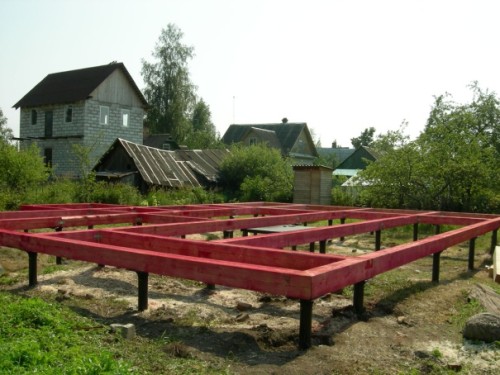
- Schweller - In some cases, the strapping is made from the rancher. For this, the steel profile is placed on piles and attached through mortgage reinforcement using a welding machine. If the foundation is made of screw piles, the channel can be welded directly to the pile of themselves. As a channel, there and metal piles after welding must be coated with an anti-corrosion composition.
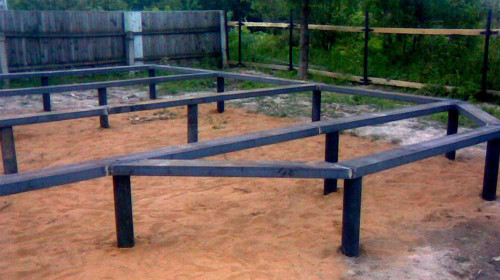
- Reinforced concrete woodwork is a design that is a national team or a solid tape. In fact, it is a ribbon foundation in a miniature built on piles. Such a strapping is mainly done for buildings from brick or aerated concrete, but sometimes reinforced concrete woodwork becomes a reliable base for houses from a tree. As we have said, the design can be solid or national team. In the second case, finished beams are used, setting them on piles and bonding among themselves. However, most often builders prefer to make a solid reinforced concrete tape. To do this, formwork is installed on the piles, the framework of steel reinforcement rods is placed inside and poured it with a cement-sandy mixture. Cement for such a frame must be the highest brand (not lower than M400). Formwork can be removable and non-removable. In the first case, after pouring the concrete, her shields from boards and plywood are removed. In the second, the formwork is made of durable extruded polystyrene foam, and it is left untouched by covering the finishing material from above. Thus, it enhances the thermal insulation qualities of the foundation, which is especially relevant for a columnary type, since the subfield is not protected from the cold.

Methods for fastening the strapping
Before you begin the strapping of the pile foundation, it is necessary to clearly determine the way of installation, as well as pick up materials.
Modern builders use the following ways to install strapping on piles:
- For threads - this option is applicable for piles made of wood, because they are quite thick and durable, but at the same time treatable. In this case, it is extremely important to correctly calculate the threads, since if the pile is insufficient thickness, it may not withstand the load and crack.
- Welding - This fastening method is used for metal piles. In this case, the use of the welding machine is almost the only possible option, since any other fastener will not be able to give such strength.
- Clamps - a universal way to fasten the strapping to the pile, which is also suitable for painting and for metal beams. Builders use it even in cases where piles are not enough thick to install the thread. But mostly specialists recommend using clamps to enhance the main way of compound.
I would also like to mention the fastening of the bar runs during the construction of a wooden painter. You can do this by two methods: to connect with direct interface or oblique bore with overlapping the place of docking board or install the Gerbera plate hinge. In the latter case, the screws are spreading the bracer in height, which allows you to make all the strapping less susceptible to the tillats and pillars. The external strapping of the pile foundation of the bar with their own hands should be done double, which we will tell a little later. For the manufacture of internal runs, a ram of 150 mm is taken. Facial joints of the runs and fastening sites with transverse pile are performed by galvanized plates-clamps or steel corners.
Installation technology strapping
In the old days, almost all houses were erected from wood, and even foundations were built from durable wood. Nowadays, this approach may seem at least strange and ineffective, but, nevertheless, some of the houses built in this way are still to this day. The secret of durability is pretty simple - the pillow was put on the ground from a mixture of clay with sand, and they were put on her starting crown made of oak logs. It was thoroughly laughed with tar or wood resin. This crown simultaneously served as the foundation and strapping and the basis for the construction of walls. If you look at the modern methods of installing the strapping, you can learn the main stages of the ancient technology: a durable thick wood is placed on a zoomed base, covered with protective compositions and walls are built on the result.
Ribbon foundation
The strapping may be needed not only for pile, but also for tape foundations. In this case, the walls built from a bar or a rounded log is quite problematic to attach to a concrete base. That is why the first crown is the thick wooden timber - Scarlet.
Anchor bolts or mortgages are used to fasten the bar to reinforced concrete tape.
How to install a strapping on a ribbon foundation:
- Check the flattening surface with a construction level. If necessary, grate the irregularities or pour the leveling cement screed. Drops at an altitude of up to 10 mm can be adjusted by laying under the timing of solid thickness.
- Ship the foundation tape with waterproofing material. You can use a regular runneroid or linse a bitumen, and it is to lay a runner.
- Drill in the bars of the opening, the size of which should be slightly larger than the diameter of the anchor studs concerned in the foundation tape. For each stud, put on the gasket and a wide washer.
- Place the bar for waterproofing so that the studs entered into the drilled holes. Brux can be connected to the "Bowl" or "in the paw" using each other.
- Secure the nuts with nuts, and in places where the corners of the bars will comply with each other with napes or nails, the anchor can not be set.
After installing the lower strapping, you can start the wall frame mount. The described technique is suitable not only for tapes, but also for other foundations with minor amendments and technical nuances.
Pile Fundam
Professional builders in their practice of mounting strapping from a bar on screw piles use two technologies: fastening on the thread and clamps. Such a double fixation provides confidence that the timber will last as long as possible and will reliably hold the box all the foundation pillars. The only thing one should never forget - the processing of all wooden materials by antiseptics, and metal - anti-corrosion compositions. Moreover, it is recommended to do this once a year with the onset of warm and dry weather.
How to perform the strapping of the pile-screw foundation:
- First of all, the strapping should be placed on the thread. It is more convenient to do this when piles are in the form of a bucket or an inverted "P" (flange). First, take the timing of the desired length and place it between two racks.
- Previously at all points where the timber will come into contact with the pile, launch the gaskets from the usual rubberoid impregnated with the oil.
- The lateral column of the timber should be fixed with self-stips, and to the lower base - through studs or small anchor bolts. After fixing the bar slightly pick it up with a hammer.
- To give the strapping additional strength, at the external corners, enhance the connection locations with spikes or small galvanized steel corners. They should be chosen in accurately according to the size of the angle between piles and the bar, attaching them with galvanized self-draws.
This method of fastening needs to be done with all the pile, carefully following not a single untreated area.
It should be taken into account that if piles are located in such a way that the bars are impossible between them at the bottom and on the sides (piles are not in the form of a flange), the threaded compound prefers fixation by clamps. To do this, on the tops of the piles put the bars, tightening them with self-draws or welding, if the pile foundation is done by the schweller.
In the process of compound, follow the observance of the ideal evenness of the upper plane of the bar. If it turns, the walls will turn out uneven, so regularly use a water or laser level. Complete all over the perimeter. Between the pile beams on the horizontal bars put on wooden bars in the form of the letter "P". These bars are called clamps, and they should be less in size than the main bars. Thus, you will provide additional fixation of the elements. The ends of the clamp must be drawn down. Subsequently, they are bonded with adjacent pile pillars using thread or steel galvanized corners. If none of the mounts are watched, it means that the work is performed qualitatively.
Useful advice
Finally, we suggest familiarize yourself with the useful tips that will help make the strapping of the pile foundation by the corner, the channel or the bar as much as possible and promptly. First, before laying the bars or metal beams on piles, make sure that they (piles) have the same height. Otherwise, the blockage will not converge.
Secondly, in the process of installing the strapping, make sure that the tapping screws are located strictly in the center of the bar, otherwise it can crack. The quality of the bar also plays an important role. It is necessary to buy unspoken pests and well-dryed material with the smallest number of bugs. The level of humidity of the bar should not exceed 18%, otherwise it is deformed during the heat drying process.
Remember that the strapping must be wider than the columns. Only then can the design be durable and durable.
Video on the strapping of the pile foundation of the timber and the advantage of this method:

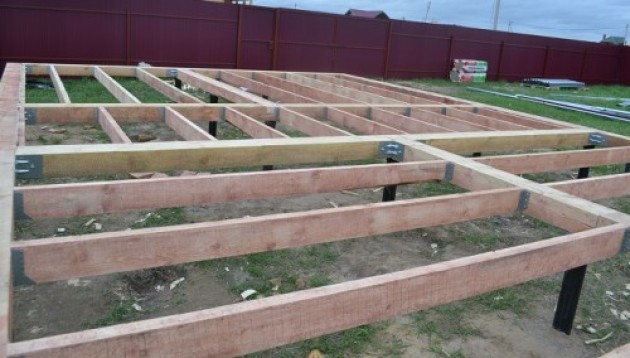

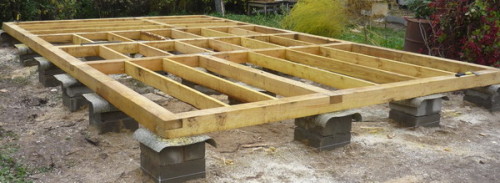
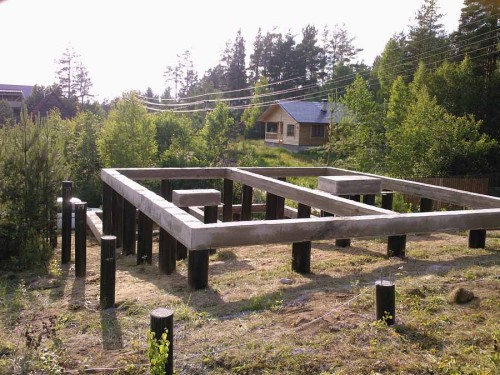
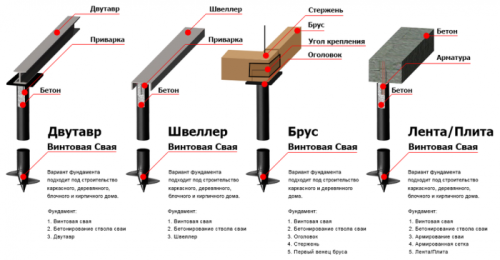
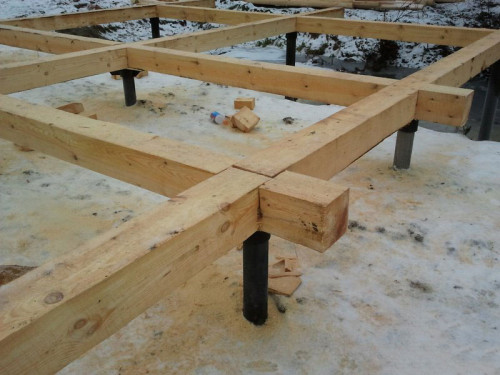
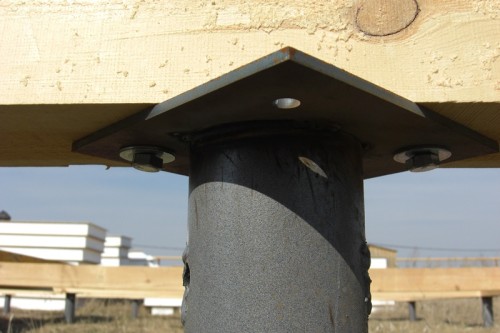
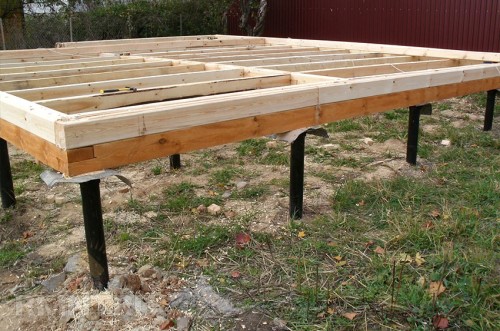
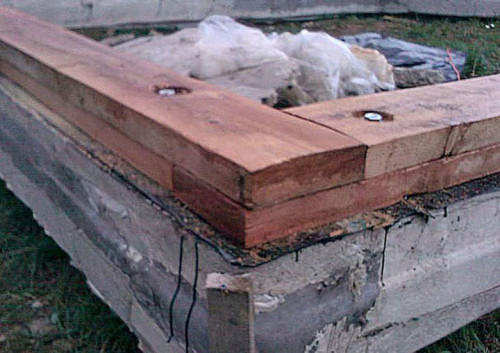
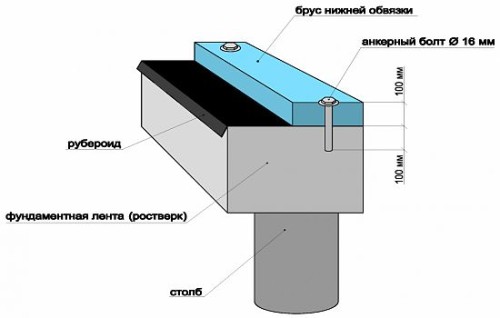
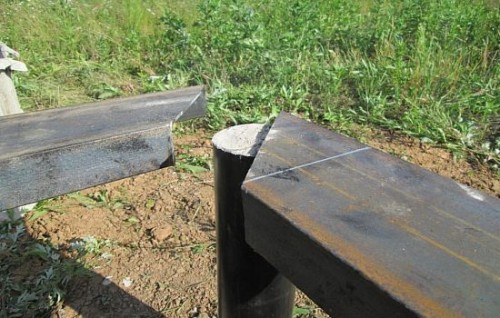
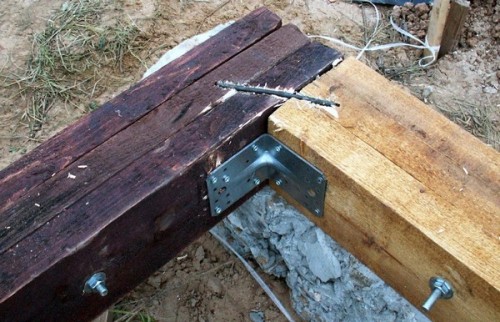
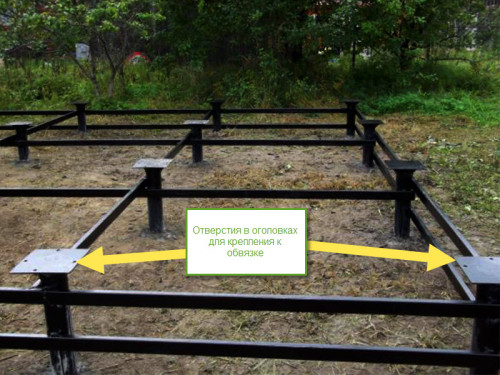












 Start a discussion ...
Start a discussion ...